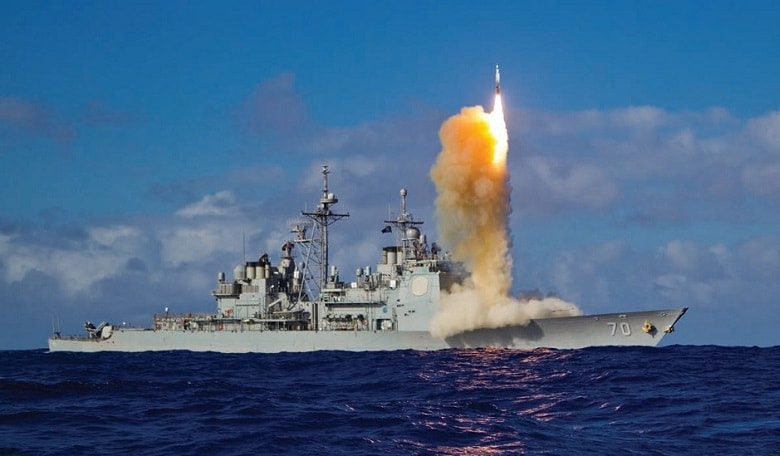For decades, the United States and its allies have been vulnerable to the threat of ballistic missiles. Since the US withdrawal from the Anti-Ballistic Missile Treaty, the United States has moved forward to develop and deploy a layered ballistic missile defence system to protect its homeland, forward-deployed troops and allies around the world. The North Atlantic Treaty Organization (NATO) has commanded special attention from US policymakers, largely due to the perception of a special relationship and a danger to the Alliance that is posed by advancing Iranian ballistic missile and nuclear weapons programmes.
In the preface to the Ballistic Missile Defense Review Report for 2010, the then Secretary of Defence, Robert Gates, wrote that, “the threat to our military forces and to our allies and partners is growing rapidly.”1 Since 2009, in co-operation with NATO, the US has been developing and deploying ballistic missile defence systems that would protect the Alliance from Iranian and North Korean ballistic missiles.
According to the Air Force Intelligence, Surveillance and Reconnaissance (ISR) Agency’s assessment, “Iran could develop and test an ICBM [intercontinental ballistic missile] capable of reaching the United States by 2015.”2 Iran has fewer than 100 short-range ballistic missiles and an unknown number of medium-range ballistic missiles, some of which can reach the territory of European NATO allies.
It is believed that Tehran has co-operated with North Korea on both its ballistic missile and nuclear weapons programmes.3 Rogue states might also be developing the capability to pose an electromagnetic pulse (EMP) threat to the United States.4 US and allied systems, especially civilian infrastructure, remain critically vulnerable to an EMP threat.
In a secret report in 2013 which was “accidentally marked as unclassified”, the US Defense Intelligence Agency has assessed with moderate confidence that North Korea now has nuclear weapons capable of delivery by ballistic missiles.5 If North Korean missiles can reach the USA, they could reach Canada, too.
But while the Canadian government supports NATO missile defence efforts for the protection of its European NATO allies, Canada does not participate in any way in US long-range ballistic missile defence efforts.
This may open a potentially attractive avenue for adversaries of the United States since the security and economies of the two nations are intimately intertwined.6
The current missile defence systems are not geared toward addressing Chinese and Russian ballistic missile threats. According to the 2010 Nuclear Posture Review, “Russia and the United States are no longer adversaries, and prospects for military confrontation have declined dramatically.”7
However, the recent crisis in Ukraine may mean that this policy has to be re-assessed. Russia has the world’s largest nuclear weapons arsenal. It possesses ballistic missiles of various ranges and is modernising its ballistic missiles and nuclear weapons. Moscow has continuously objected to US missile defence activities in Europe, but after Russia’s military action in Ukraine, the US has suspended military-tomilitary dialogue between the two countries.
China, for its part, has the world’s most diverse and active ballistic missile development programme, including anti-ship ballistic missiles that would allow it to threaten US aircraft carriers in the Asia-Pacific region. China is also aggressively pursuing an anti-satellite weapons capability and actually shot down its defunct weather satellite in 2007. Both China and Russia also continue to test their nuclear weapons and are developing new nuclear weapons.
Countering the Iranian threat
In 2009, assessing that the Iranian long-range ballistic missile threat had progressed more slowly than previously expected, President Obama announced a Phased Adaptive Approach, a missile defence plan for Europe.
In 2010, NATO called for development of the capability to defend its populations and territories against ballistic missile attack as “a core element of our collective defence, which contributes to the indivisible security of the Alliance.”8 At the core of this plan are US Aegis ships equipped with progressively more capable Standard Missile-3 (SM-3) interceptors and supported by an improved commandand- control network. The United States also deploys 30 Ground-Based Midcourse Defence Interceptors in Alaska and California. This number is due to increase to 44 by 2017.
In May 2012, NATO declared interim operational capability for its missile defence. This means that NATO agreed on command-andcontrol procedures for missile defence, and key allies agreed to host American missile defence assets. Turkey currently hosts an AN/TPY-2, which is a transportable X-band, high-resolution, phased-array radar designed specifically to detect ballistic missiles early in their flight and provide tracking information for the system.9 The US uses additional sensors for target detection and tracking, including the Space Tracking and Surveillance System; early warning radars in California, Alaska, the United Kingdom and Greenland; and very capable sea-based X-Band radar for midcourse tracking. Depending on the origin of the ballistic missile threat, the US can use additional forward-deployed AN/TPY-2 radars and Aegis SPY-1 radars.
The United States broke ground on a future Aegis land-based missile defence site in Romania in 2013. It will start work on a similar site in Poland in 2015. The US also has deployed one of its missile defence-capable Aegis ships to Europe.
Pursuing and deploying layered comprehensive ballistic missile defence systems is one of the key steps that NATO can take to protect itself from ballistic missiles. Effective missile defences decrease the value of ballistic missiles and make the pursuit of this technological enterprise more costly.
The role of soft power
Ballistic missile defence is only one of the tools that the Alliance can use to mitigate ballistic missile proliferation. Countries can take unilateral or multilateral measures to discourage other countries from pursuing ballistic missile and nuclear weapons programmes. The US tried to organise international sanctions to prevent North Korea from developing a nuclear device, but the effort failed. Nevertheless, similar efforts are underway with respect to Iranian ballistic missile and nuclear weapons programmes.
Individual countries may still pursue measures such as sanctions. They may also continue to support measures such as the Proliferation Security Initiative, a “global effort that aims to stop trafficking of weapons of mass destruction (WMD), their delivery systems, and related materials to and from states and non-state actors of proliferation concern”10; or uphold the Missile Technology Control Regime, which “restricts the proliferation of missiles, complete rocket systems, unmanned air vehicles, and related technology for those systems capable of carrying a 500 kilogram payload at least 300 kilometres, as well as systems intended for the delivery of WMD.”11
The stronger these initiatives are, the harder it will be for bad actors to obtain these dangerous capabilities and the more political capital and resources they will have to spend.
Experience teaches us, however, that these measures might fail if a country is truly dedicated to developing ballistic missile and nuclear weapons capabilities. Experience also suggests that diplomacy has a limited role vis-a-vis a truly committed opponent. Both Iran and North Korea have invested significant resources in their ballistic missile and nuclear weapons programmes, despite international pressure, multiple rounds of sanctions, and years of diplomatic negotiations.
That is also why it is likely that the United States and its allies will face increasingly sophisticated ballistic missiles in the near future. This will only strengthen the rationale for continued development of ballistic missile defence systems.














